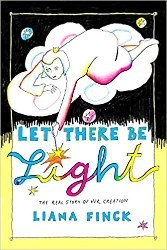To mark the 100th birthday of Will Eisner this year, Norton published a centennial edition of his milestone book, A Contract with God: And Other Tenement Stories. The book, originally published in 1978, is widely considered to be the first graphic novel and should be included in any comic book collection.
Eisner was one of the comic book pioneers, working in the medium before the boom that occurred with the introduction of Superman. In the 1940s, he revolutionized visual storytelling with his own take on the superhero genre, The Spirit, using film techniques in his sequential art narratives. Even when he worked outside the business as an illustrator — for instance for the U.S. Army — he never retired from comics and always believed in the potential of the medium. He was over sixty when he published A Contract with God.
The book is not written for kids seeking the next superhero battle. Instead. it is a longform comic for more mature readers. Strictly speaking, A Contract with God is a collection of four short stories based on Eisner’s childhood memories. An intimate portrait of immigrant life in the 1930s Bronx, it is an homage to a vanished world — not a glorified past, however, but a past with all its faults and ugliness. The tragic main characters are all destined to fail, and each story presents a surprising twist at the end.
The most memorable of these short stories is the first one, “A Contract with God.” This is the tale of Frimme Hersh, a righteous man who is doing one good deed after another, and is told that “God will reward you” — but witnesses one catastrophe after another. Eisner’s modern Job moves from his shtetl in Eastern Europe to New York in the hope for a better life, but suffering continues to be the leitmotif of his life. When he finds an abandoned baby left on his doorstep, he raises her as his own daughter and finally his life seems to have a purpose. But then, all of a sudden, she dies, and Frimme loses his faith. After sitting shiva, he shaves off his beard, abandons Judaism, and starts a career as a greed-driven real estate investor. But despite his financial success, Frimme never finds happiness.
“A Contract with God” is a masterpiece that even nearly forty years after its first publication hasn’t lost its power. As we learn from an introduction written by Eisner shortly before his death in 2005, the story was the most personal, since he mourned in it the death of his own daughter — a fact that was for many years unknown in the comics community.
With this book, the pioneer of comics became the father of the graphic novel and paved the way for later works like Art Spiegelman’s Maus. The beautiful hardcover centennial edition, with a new introduction by Scott McCloud, invites fans to rediscover this masterpiece and new readers to explore the roots of graphic novels.
Related Content:
- Ilan Stavans: Your Graphic Novel and Mine
- Julian Voloj: Comic Books Are More Than Superheroes
- Tahneer Oksman: Drawing a Room of Her Own
Julian Voloj is a New York – based writer whose work has been published in the New York Times, Rolling Stone, the Washington Post, and many other national and international publications. Born to Colombian parents in Germany, where he studied literature and linguistics, Voloj moved to New York in 2004. His fascination for forgotten heroes and hidden figures stems from his own family history and has been a leitmotif in his nonfiction graphic novels.




